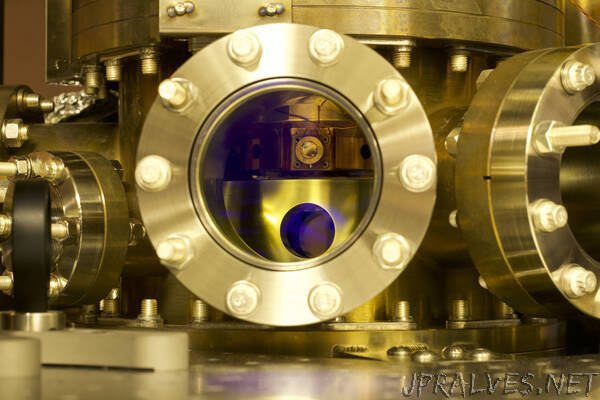
“Spin-squeezed atoms used to improve quantum measurements
Although today’s best optical atomic clocks can be used to make extremely precise measurements, they are still limited by the noise from the spin statistics of the many atoms they interrogate, known as quantum projection noise (QPN). But by leveraging the truly quantum nature of these systems, it is possible to entangle the atomic sample to circumvent this QPN limit. Now, researchers have reported the first direct observations of an optical-lattice clock operating below the classical QPN limit, averaging down to a measurement precision level of 10−17.
Maya Miklos from JILA, a joint institute of the University of Colorado Boulder and the National Institute of Standards & Technology, will present this research at the Optica Quantum 2.0 Conference and Exhibition, which will take place as a hybrid event 18-22 June in Denver, Colorado.
“Improving the frequency stability of optical lattice clocks both advances a whole host of practical applications, and opens new doors to exploring fundamental physics. For example, GPS works by triangulating your position based on how long it takes to bounce signals off distant satellites; improved timekeeping directly translates into better knowledge of location,” explains researcher Maya Miklos, JILA. “Right now, these best clocks all use large samples of non-interacting atoms—when we measure the quantum state of these atoms to extract information about the clock frequency, each atom is ‘projected’ into a discrete state, contributing so-called ‘quantum projection noise’ to frequency measurements. One approach to improving these clocks is it to harness the quantum feature of entanglement to reduce the projection noise of the collective ensemble. In this work, we’ve demonstrated the best stability to date of a spin-squeezed clock, pushing us one step closer to making spin squeezing practical for state-of-the-art optical lattice clocks.”
Quantum metrology addresses the discrete, or quantized, energy levels of atom-like systems to set frequency standards that can be used for other high-precision research or even to define units of measurement such as the second. Thanks to their precision, optical lattice clocks have advanced quantum metrology across many applications.
In the new work, the researchers prepared spin-squeezed atoms in an optical-lattice clock to achieve improved precision. Although proof-of-principle experiments have generated squeezing on optical clock transitions and inferred sub-QPN operation after subtracting noise, this is the first time that an optical-lattice clock has been directly observed to operate below the QPN limit.
To accomplish this feat, the researchers constructed an apparatus that combined a vertical one-dimensional strontium optical lattice clock with an optical cavity that provides strong collective coupling. This enabled atom squeezing through cavity-mediated quantum non-demolition measurements. A conveyor-belt lattice allowed independent sub-ensembles to be shuttled into the cavity to generate distinct spin-squeezed samples, while a state-of-the-art clock laser simultaneously interrogated the entire atom cloud.
The researchers then performed a self-synchronous clock comparison between two spin-squeezed ensembles in a strontium optical lattice clock. They were able to directly measure 2.0(3) dB of metrological gain beyond the projection noise limit for this system, at a precision averaging down to the 10−17 level. This represents a major step toward improving state-of-the-art optical lattice clocks through spin squeezing.
Future work on this experiment will further control atomic motion within our lattice to improve rotation fidelities and collective coupling to the cavity. These technical improvements will lead to better clock stability and less decoherence of the atomic ensemble.”
